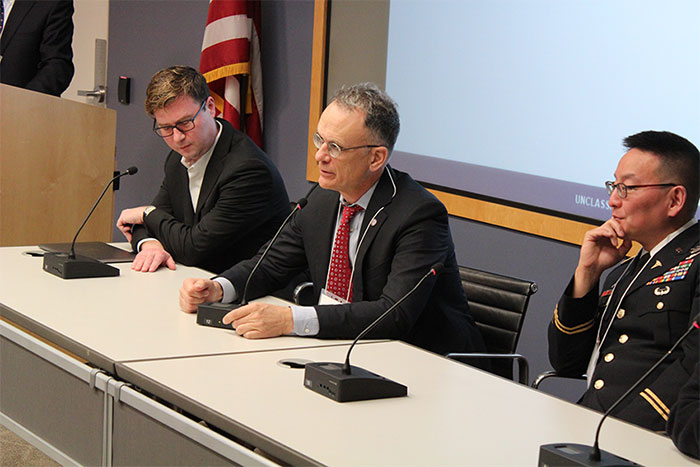Human Impact, Lasting Solutions at Heart of Burn Meeting

For the U.S. Army Medical Research and Development Command (USAMRDC) personnel participating in the Ninth Annual Department of Defense State-of-the-Science Meeting on Blast-related Burn Injury Research, the goal is – and always has been – simple: find the newest and best methods to treat injured Warfighters on the battlefield and at home.
For that reason, the observation offered by COL Kevin Chung during his keynote address to the assembled meeting crowd on March 3 was both perfect in its simplicity and, at the same time, jarring in its complexity.
"Failure is one of the tools we need for progress," said Chung, the current Chair of the Department of Medicine at the Uniformed Services University of the Health Sciences (USUHS).
For the diverse team of scientists, corporate partners, and academic representatives gathered at RAND Corporation offices in Arlington, Virginia, for the three-day event, that statement serves as a type of North Star for their entire research mission. As the U.S. military medical apparatus sifts through still-emerging burn injury data culled from recent conflicts and, at the same time, prepares for the possibility of even greater burn risk in future multi-domain operations, the need to address issues related to everything from burn prevention to burn treatment within prolonged field care environments has grown substantially.
"Scientists need to take the risks necessary to prepare for future conflicts," said Dr. Lee Cancio, director of the U.S. Army Institute of Surgical Research (USAISR) Burn Center, in a morning presentation that, outside of serving as a rousing and effective call-to-arms, focused chiefly on the importance of improved provider training.
Said Cancio, a retired Army colonel himself, "Most deployed [medical] providers have little-to-no burn experience prior to deployment."
That training gap, says Cancio, is likely to be exploited in future multi-domain operations as burn injuries become more prevalent. Recorded burn injuries in Iraq and Afghanistan were more than double those recorded during the Vietnam War (10% to 4.6%), with the main culprit in the former being the increased use of improvised explosive devices (IEDs) by American adversaries, according to Cancio.
For Chung, the path forward begins with structure, sound judgement, and an increased awareness of the various emerging medical technologies available. As part of his presentation, Chung reviewed a series of notable case studies intended to highlight the importance of both the development of pertinent clinical practice guidelines (CPGs) and, potentially, the application of leading-edge technologies like the Extra Corporeal Membrane Oxygenation (ECMO) tool and the Resuscitative Endovascular Balloon Occlusion of the Aorta (REBOA).
"We need to ask what we can do to optimize functional outcomes in our patients," said Chung, in an effort to both praise and, simultaneously, push the limits of an already robust and constantly-evolving military medical system.
In effect, that sentiment also serves as a prelude to the conference itself, which will offer attendees the opportunity to participate in a series of working groups designed to, ultimately, construct methods for improving scientific infrastructure, data collection, and for plotting potential long-term solutions.
For the varied and diverse team descending on RAND Corporation offices, the goal is clear and defined. For Chung and Cancio, however, the effort is a personal one – one which demands unwavering discipline and respect.
"They are in our hearts and minds," said Cancio of the Soldiers he has treated over his decades-long career. "They are the very agents of change for modernization and progress."














